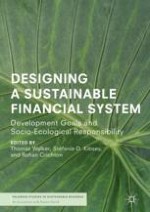This edited collection brings together leading theoretical and applied research with the intent to design a sustainable global financial future. The contributors argue that our world cannot move toward sustainability, address climate change, reverse environmental degradation, and improve human well-being without aligning the financial system with sustainable development goals like those outlined by the United Nations. Such a system would: a) be environmentally and socially responsible; b) align with planetary boundaries; c) manage natural resources sustainably; d) avoid doing more harm than good; and e) be resilient and adaptable to changing conditions. The overarching theme in this collection of chapters is a response to the worldwide, supranational sustainable finance discussions about how we can transition to a new socio-ecological system where finance, human well-being, and planetary health are recognized as being highly intertwined.
